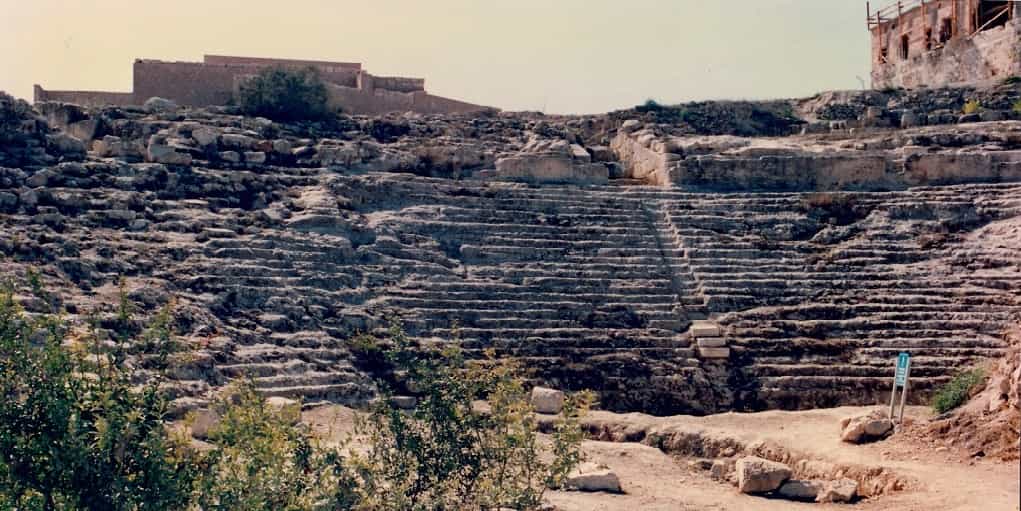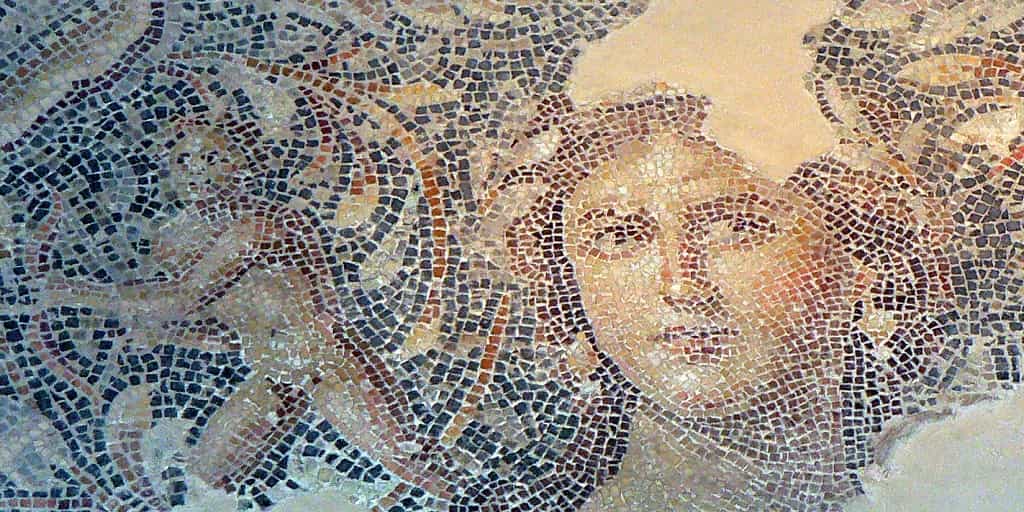In the 3rd c. CE, Zippori was an important Jewish city and seat of the Sanhedrin, the traditional Jewish legislative assembly. We must bear in mind that the Sanhedrin moved several times during its existence and not less than six cities in the Galilee hosted it until it ceased functioning in the city of Tiberias on the Sea of Galilee.
At the time the Sanhedrin was in Zippori, it was headed by the revered Rabbi Yehuda HaNasi and this, for 17 years until his death. He was then buried in Bet Shearim (for more on this site, read the preceding post). Quite a few remains of the Jewish city can be seen among which several mikvaot (Jewish ritual baths).
Zippori’s hours of glory however are most assuredly those of the Roman presence in the city from 55BCE to the late 4th c. CE. Briefly renamed Autocratoris by Herod Antipas, the Great King Herod’s son, who made it his capital, it was also the capital of all of Galilee.
When the Great Revolt of the Jews broke out in 66 CE, Zippori remained neutral and its inhabitants were spared. Following the Bar Kochva Revolt some 70 years later, the city was renamed once again, much like Jerusalem was renamed (Aelia Capitolina) Diocaesarea Jupiter. Zippori became an entirely Roman city and it those remains that we see today.

The Galilee survived many an earthquake, political and geological but the earthquake of 363 CE was particularly destructive. The city was rebuilt in the 5th c. under the Byzantine rule becoming an important Christian city due to the fact that Christianity had since become the official religion of the Roman/Byzantine Empire. From that period, archaeologists have uncovered no less than two churches and three synagogues (indeed, there was also a large and thriving Jewish community there as well) yet suspect that many more could still be found.
The last significant period of Zippori is that of the Crusaders who decided that La Sephorie was the birthplace of Saint Anne, the Virgin Mary’s mother, even though the traditional birthplace of Anne had been the site of the Bethesda Pools in Jerusalem since the Byzantine period.
So what is there to see there today for the modern-day visitor? For the amateur of ancient mosaics, Zippori is a must-stop on any visit to the Galilee. The mosaics that survived centuries of assault of all kinds are of incomparable beauty and finesse.
In Zippori, it is sometimes best to walk with one’s eyes on one’s feet. In the Decumanus, the main east/west artery in any Roman city, one can see Roman period versions of tic-tac-toe engraved in the pavements, certainly used by the legions to while away the long hours of inactivity.
Further on, in the Cardo, the main north/south artery, a menorah is drawn in the pavement. We have no valid explanation for this. Furthermore, the stones were set in a diagonal in the pavement. Was this intentional? Was it for decorative purposes? What we do see today, for sure, are the grooves that the chariot wheels made in the stones over centuries of use. Did the fact of setting the stones diagonally prevent the wheels from getting stuck between the stones?
The real thrill of a visit here, however, are, as I mentioned above, the mosaics in the House of the Nile Festival, the House of Orpheus as well as the House of Dionysius and the Synagogue.
The artists who created these mosaics were obviously the most masterful artists of their day. Not that they invented anything in terms of iconography, they were essentially viewed as labourers, but their technique was flawless: see how they mastered light and dark, had an acute sense of detail and precision in laying the tiny tesseraeneeded to produce a pixilized image (to use a modern term).

Entire scenes of Greek and Roman mythology were produced in the most minute detail. These were not only decorative motifs but actual stories unfolding on these carpets of mosaics…
We know of the Mona Lisa of Leonardo da Vinci and her eyes that famously follow the viewer wherever he or she may be standing. Well, Zippori boasts its very own Mona Lisa of the Galilee. Check her out and you will see that she does the same (some 12 centuries before the great Italian master!).
The floor of the synagogue is also exceptionnal. One can “read” in the themes chosen, an entire cycle of life beginning with the binding of Isaac in which the vulnerability of man and his faith in God are tested; above that, a Zodiac wheel representing the cycle of life with the four seasons and astronomical figures determining the Jewish liturgical year and finally, at the foot of the aron kodesh, the Torah Ark, a mosaic representing a menorah, a shofar and the showbread. Past, present and future dispolayed in glory before our very eyes.
Check out Della’s Facebook page for more!





